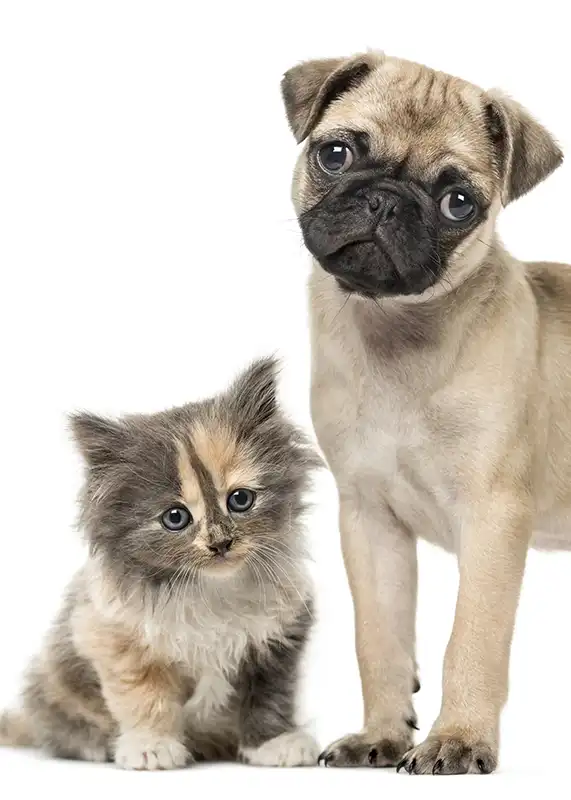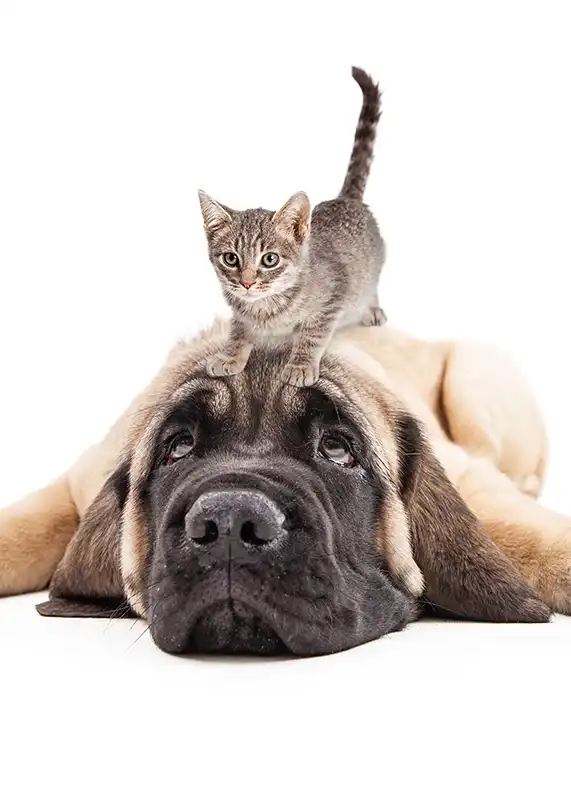We’re turning over the spotlight to a brand-new kitty today! The Salty Licorice Cat has a beautiful coat that fits in with the latest fashions. These cute cats have ombre, or gradient, colored fur, with a lot of black at the roots and white at the ends. They are also known as salmiak cats, which means “salty licorice cats.” Read on to learn more about this cute kitten from a Philadelphia, MS veterinarian.
Why Does Everyone Call Fluffy “The Salty Licorice Cat”?
The cats’ names come from a tasty Finnish treat. As you might have guessed, it’s made of licorice covered in salmiak salt. It’s very popular in Scandinavia, the Benelux region, and northern Germany. It is sometimes called salmiak liquorice or salmiac licorice.
What Do The Salty Licorice Cats Look Like?
Fluffy looks like a tuxedo cat, except for the white in her fur. Salmiak cats usually have black fur as a base color, but can also have blue, brown, or tabby coats. Their tails are usually white or mostly white, and their eyes are usually a beautiful shade of green or yellow.
Where Did Fluffy Come From?
Fluffy is from Petäjävesi, a village in Finland. The town is in a beautiful spot and is known for its lakes, farms, and an 18th-century wood-log church. Or maybe we should say that it was known for these things in the past. The Salty Licorice cat will have to be added to the town’s list of famous people, must-see sites, and interesting residents.
Is the Salty Licorice Cat a New Breed?
Fluffy hasn’t been named a new breed yet. The Salty Licorice name comes from the color of her coat. This is also true for many other types of cats, like tabbies and tuxedos.
Is Cat Licorice Okay For Cats?
Licorice isn’t toxic to cats. In fact, research shows that it may help cats with breathing problems and may also help with inflammation. However, more study needs to be done. We would suggest giving your kitty a more appropriate treat, like a bit of deli meat. Never give your feline buddy any herbs or medications unless your vet approves.
Putting that aside, some of our feline pals do seem to like the taste of licorice. Fluffy is probably more interested in the feel or smell, though. Cats can’t taste sweets because of a quirk in their DNA. However, kitties have been seen to like things like cake, cookies, and donuts, so it looks like some of these little furballs didn’t get the message. While it might be fun to share a donut with your cat, you shouldn’t give Fluffy any sweets. They have a lot of sugar and xylitol, which is also known as “birch sugar,” which is bad for cats. Ask your vet for specific advice on giving your feline pal treats. (Fluffy may enjoy a few other Finnish favorites: herring, cod, and salmon.)
What Exactly Is Salted Licorice?
As the name suggests, it’s licorice sprinkled with salmiak salt. Danish candy makers Galle and Jessen came up with small black treats in the 1800s, starting a food trend that has definitely lasted. We have to admit that it sounds cozy to curl up with a dish of sweets and a purring Salmiak cat on a cold night.
Want to try your hand at making it? You can find many different recipes online. All of these are small changes to the same main idea.
Here’s a fairly typical version: Mix 8 tablespoons of unsalted butter, 1 cup of sugar, 1/2 cup of sweetened condensed milk, 1/4 cup of blackstrap molasses, and 1/8 teaspoon of kosher salt in a pot. Bring to a boil. After taking it off the heat, add a half cup of dark corn syrup, a quarter cup of whole wheat flour, 1.5 tablespoons of anise essence, and 1.5 teaspoons of black food dye. (You can change the heavy cream to condensed milk and the brown rice syrup to dark corn syrup to make it healthy.) Pour it into a pan lined with parchment paper. Let cool for 30 to 45 minutes. Then, take it out and shape it. Don’t forget to add salt!
Want to take your goodies to the next level? Get a kitty-shaped mold, and call them Salty Licorice Katjes. More than one candy company already does this!
How Much Do Salty Licorice Cats Cost?
We really don’t know yet. It’s still not common to see these pretty cats. Plus, as far as we know, the only Salty Licorice cats that are available in the States are the licorice variety, rather than the purring/meowing kind. However, even though they are cute, as animal fans we feel obligated to talk about the problems with the designer breed craze. This, unfortunately, has contributed to some major animal welfare issues, including overpopulation and animal hoarding. The saying “Adopt, don’t shop” is very true here. Many cute and friendly cats are in shelters, looking for a new home. No matter what color they are, our feline pals are great pets.
When Did The First Salty Licorice Kitten Come Into The World?
We don’t know who found the Salty Licorice Cat or took it in. Fluffy became famous In 2007, when it was found that some of Petajavesi’s kitties had a very cutting-edge fashion sense.
At first, no one knew if the cats would be able to have kittens because all the Salmiak cats had been spayed or neutered. The riddle has been solved, though: a Salty Licorice cat was seen giving birth to some very cute kittens.
Who Researched The Salty Licorice Cat?
Hannes Lohi, a geneticist at the University of Helsinki, is credited with starting the official study. Geneticists and animal rights campaigners worked together to complete it.
Five Salty Licorice cats were looked at by Lohi’s group. The scientists found that none of the cats had the exact gene changes that usually cause the fur to be white. These changes are also closely linked to hearing loss, which is why a lot of white dogs are hearing-impaired. After that, they sequenced the whole genomes of the cats and found a unique abnormality. A gene named KIT was changed by the mutation. This gene is also connected to piebald markings on horses and other animals. The researchers also studied 178 other cats with normal coat colors. All Salmiak kittens had two copies of the gene variant that caused the unique coloring. This gene variant is now called w-sal, or salmiak. Several of the other cats also had a copy. The carriers could not wear Salmiak colors and patterns because the gene is recessive.
The results were written up in the journal Animal Genetics in May. To the best of our knowledge, the kitties involved have declined to comment. That’s really just purr for the course!
Make an Appointment at Your Philadelphia, MS Pet Clinic
Does your feline buddy need a checkup, shots, or treatment for parasites? When was the last time your cat came inside? Please call our Philadelphia, MS pet hospital, for all of your cat’s medical care needs. We are always happy to help!







